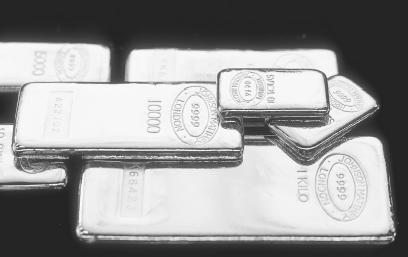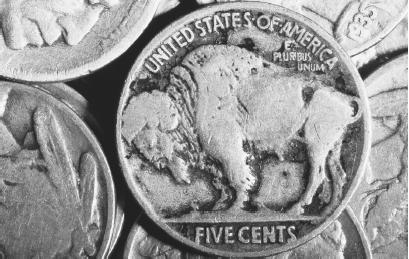Transition Metals - How it works

Two Numbering Systems for the Periodic Table
The periodic table of the elements, developed in 1869 by Russian chemist Dmitri Ivanovitch Mendeleev (1834-1907), is discussed in several places within this volume. Within the table, elements are arranged in columns, or groups, as well as in periods, or rows.
As discussed in the Periodic Table of Elements essay, two basic versions of the chart, differing primarily in their method of number groups, are in use today. The North American system numbers only eight groups—corresponding to the representative or main-group elements—leaving the 10 columns representing the transition metals unnumbered. On the other hand, the IUPAC system, approved by the International Union of Pure and Applied Chemistry (IUPAC), numbers all 18 columns. Both versions of the periodic table show seven periods.
In general, this book applies the North American system, in part because it is the version used in most American classrooms. Additionally, the North American system relates group number to the number of valence electrons in the outer shell of the atom for the element represented. Hence the number of valence electrons (a subject discussed below as it relates to the transition metals) for Group 8 is also eight. Yet where the transition metals are concerned, the North American system is less convenient than the IUPAC system.
ATTEMPTS TO ADJUST THE NORTH AMERICAN SYSTEM.
In addressing the transition metals, there is no easy way to apply the North American system's correspondence between the number of valence electrons and the group number. Some versions of the North American system do, however, make an attempt. These equate the number of valence electrons in the transition metals to a group number, and distinguish these by adding a letter "B."

Thus the noble gases are placed in Group 8A or VIIIA because they are a main-group family with eight valence electrons, whereas the transition metal column beginning with iron (Group 8 in the IUPAC system) is designated 8B or VIIIB. But this adjustment to the North American system only makes things more cumbersome, because Group VIIIB also includes two other columns—ones with nine and 10 valence electrons respectively.
VALUE OF THE IUPAC SYSTEM.
Obviously, then, the North American system—while it is useful in other ways, and as noted, is applied elsewhere in this book—is not as practical for discussing the transition metals. Of course, one could simply dispense with the term "group" altogether, and simply refer to the columns on the periodic table as columns. To do so, however, is to treat the table simply as a chart, rather than as a marvelously ordered means of organizing the elements.
It makes much more sense to apply the IUPAC system and to treat the transition metals as belonging to groups 3 through 12. This is particularly useful in this context, because those group numbers do correspond to the numbers of valence electrons. Scandium, in group 3 (hence-forth all group numbers refer to the IUPAC version), has three valence electrons; likewise zinc, in Group 12, has 12. Neither the IUPAC nor the North American system provide group numbers for the lanthanides and actinides, known collectively as the inner transition metals.
THE TRANSITION METALS BY IUPAC GROUP NUMBER.
Here, then, is the list of the transition metals by group number, as designated in the IUPAC system. Under each group heading are listed the four elements in that group, along with the atomic number, chemical symbol, and atomic mass figures for each, in atomic mass units.
Note that, because the fourth member in each group is radioactive and sometimes exists for only a few minutes or even seconds, mass figures are given merely for the most stable isotope. In addition, the last elements in groups 8, 9, and 10, as of 2001, had not received official names. For reasons that will be explained below, lanthanum and actinium, though included here, are discussed in other essays.
Group 1
- 21. Scandium (Sc): 44.9559
- 39. Yttrium (Y): 88.9059
- 57. Lanthanum (La): 138.9055
- 89. Actinium (Ac): 227.0278
Group 2
- 22. Titanium (Ti): 47.9
- 40. Zirconium (Zr): 91.22
- 72. Hafnium (Hf): 178.49
- 104. Rutherfordium (Rf): 261
Group 3
- 23. Vanadium (V): 50.9415
- 41. Niobium (Nb): 92.9064
- 73. Tantalum (Ta): 180.9479
- 105. Dubnium (Db): 262
Group 4
- 24. Chromium (Cr): 51.996
- 42. Molybdenum (Mo): 95.95
- 74. Tungsten (W): 183.85
- 106. Seaborgium (Sg): 263
Group 5
- 25. Manganese (Mn): 54.938
- 43. Technetium (Tc): 98
- 75. Rhenium (Re): 186.207
- 107. Bohrium (Bh): 262
Group 6
- 26. Iron (Fe): 55.847
- 44. Ruthenium (Ru): 101.07
- 76. Osmium (Os): 190.2
- 108. Hassium (Hs): 265
Group 7
- 27. Cobalt (Co): 58.9332
- 45. Rhodium (Rh): 102.9055
- 77. Iridium (Ir): 192.22
- 109. Meitnerium (Mt): 266
Group 8
- 28. Nickel (Ni): 58.7
- 46. Palladium (Pd): 106.4
- 78. Platinum (Pt): 195.09
- 110. Ununnilium (Uun): 271
Group 9
- 29. Copper (Cu): 63.546
- 47. Silver (Ag): 107.868
- 79. Gold (Au): 196.9665
- 111. Unununium (Uuu): 272
Group 10
- 30. Zinc (Zn): 65.38
- 48. Cadmium (Cd): 112.41
- 80. Mercury (Hg): 200.59
- 112. Ununbium (Uub): 277

Electron Configurations and the Periodic Table
We can now begin to explain why transition metals are distinguished from other elements, and why the inner transition metals are further separated from the transition metals. This distinction relates not to period (row), but to group (column)—which, in turn, is defined by the configuration of valence electrons, or the electrons that are involved in chemical bonding. Valence electrons occupy the highest energy level, or shell, of the atom—which might be thought of as the orbit farthest from the nucleus. However, the term "orbit" is misleading when applied to the ways that an electron moves.
Electrons do not move around the nucleus of an atom in regular orbits, like planets around the Sun; rather, their paths can only be loosely defined in terms of orbitals, a pattern of probabilities indicating the regions that an electron may occupy. The shape or pattern of orbitals is determined by the principal energy level of the

Principal energy level defines period: elements in Period 4, for instance, all have their valence electrons at principal energy level 4. The higher the number, the further the electron is from the nucleus, and hence, the greater the energy in the atom. Each principal energy level is divided into sublevels corresponding to the number n of the principal energy level: thus, principal energy level 4 has four sublevels, principal energy level 5 has five, and so on.
ORBITAL PATTERNS.
The four basic types of orbital patterns are designated as s, p, d, and f. The s shape might be described as spherical, which means that in an s orbital, the total electron cloud will probably end up being more or less like a sphere.
The p shape is like a figure eight around the nucleus; the d like two figure eights meeting at the nucleus; and the f orbital pattern is so complex that most basic chemistry textbooks do not even attempt to explain it. In any case, these orbital patterns do not indicate the exact path of an electron. Think of it, instead, in this way: if you could take millions of photographs of the electron during a period of a few seconds, the resulting blur of images in a p orbital, for instance, would somewhat describe the shape of a figure eight.
Since the highest energy levels of the transition metals begin at principal energy level 4, we will dispense with a discussion of the first three energy levels. The reader is encouraged to consult the Electrons essay, as well as the essay on Families of Elements, for a more detailed discussion of the ways in which these energy levels are filled for elements on periods 1 through 3.
Orbital Filling and the Periodic Table
If all elements behaved as they "should," the pattern of orbital filling would be as follows. In a given principal energy level, first the two slots available to electrons on the s sublevel are filled, then the six slots on the p sublevel, then the 10 slots on the d sublevel. The f sublevel, which is fourth to be filled, comes into play only at principal energy level 4, and it would be filled before elements began adding valence electrons to the s sublevel on the next principal energy level.
That might be the way things "should" happen, but it is not the way that they do happen. The list that follows shows the pattern by which orbitals are filled from sublevel 3 p onward. Following each sublevel, in parentheses, is the number of "slots" available for electrons in that shell. Note that in several places, the pattern of filling defies the ideal order described in the preceding paragraph.
Orbital Filling by Principal Energy Level and Sublevel from 3 p Onward:
- 3 p (6)
- 4 s (2)
- 3 d (10)
- 4 p (6)
- 5 s (2)
- 4 d (10)
- 5 p (6)
- 6 s (2)
- 4 f (14)
- 5 d (10)
- 6 p (6)
- 7 s (2)
- 5 f (14)
- 6 d (10)
The 44 representative elements follow a regular pattern of orbital filling through the first 18 elements. By atomic number 18, argon, 3 p has been filled, and at that point element 19 (potassium) would be expected to begin filling row 3 d. However, instead it begins filling 4 s, to which calcium (20) adds the second and last valence electron. It is here that we come to the transition metals, distinguished by the fact that they fill the d orbitals.
Note that none of the representative elements up to this point, or indeed any that follow, fill the d orbital. (The d orbital could not come into play before Period 3 anyway, because at least three sublevels—corresponding to principal energy level 3—are required in order for there to be a d orbital.) In any case, when the representative elements fill the p orbitals of a given energy level, they skip the d orbital and go on to the next principal energy level, filling the s orbitals. Filling of the d orbital on the preceding energy level only occurs with the transition metals: in other words, on period 4, transition metals fill the 3 d sublevel, and so on as the period numbers increase.
Distinguishing the Transition Metals
Given the fact that it is actually the representative elements that skip the d sublevels, and the transition metals that go back and fill them, one might wonder if the names "representative" and "transition" (implying an interruption) should be reversed. But it is the transition metals that are the exception to the rule, for two reasons. First of all, as we have seen, they are the only elements that fill the d orbitals.
Secondly, they are the only elements whose outer-shell electrons are on two different principal energy levels. The orbital filling patterns of transition metals can be identified thus: n s (n-1) d , where n is the number of the period on which the element is located. For instance, zinc, on period 4, has an outer shell of 4 s 2 3 d 10 . In other words, it has two electrons on principal energy level 4, sublevel 4 s —as it "should." But it also has 10 electrons on principal energy level 3, sublevel 3 d. In effect, then, the transition metals "go back" and fill in the d orbitals of the preceding period.
There are further complications in the patterns of orbital filling for the transition metals, which will only be discussed in passing here as a further explanation as to why these elements are not "representative." Most of them have two s valence electrons, but many have one, and palladium has zero. Nor do they add their d electrons in regular patterns. Moving across period 4, for instance, the number of electrons in the d orbital "should" increase in increments of 1, from 1 to 10. Instead the pattern goes like this: 1, 2, 3, 5, 5, 6, 7, 8, 10, 10.
LANTHANIDES AND ACTINIDES.
The lanthanides and actinides are set apart even further from the transition metals. In most versions of the periodic table, lanthanum (57) is followed by hafnium (72) in the transition metals section of the chart. Similarly, actinium (89) is followed by rutherfordium (104). The "missing" metals—lanthanides and actinides respectively—are listed at the bottom of the chart. There are reasons for this, as well as for the names of these groups.
After the 6 s orbital fills with the representative element barium (56), lanthanum does what a transition metal does—it begins filling the 5 d orbital. But after lanthanum, something strange happens: cerium (58) quits filling 5 d, and moves to fill the 4 f orbital. The filling of that orbital continues throughout the entire lanthanide series, all the way to lutetium (71). Thus lanthanides can be defined as those metals that fill the 4 f orbital; however, because lanthanum exhibits similar properties, it is usually included with the lanthanides.
A similar pattern occurs for the actinides. The 7 s orbital fills with radium (88), after which actinium (89) begins filling the 6 d orbital. Next comes thorium, first of the actinides, which begins the filling of the 5 f orbital. This is completed with element 103, lawrencium. Actinides can thus be defined as those metals that fill the 5 f orbital; but again, because actinium exhibits similar properties, it is usually included with the actinides.
Comment about this article, ask questions, or add new information about this topic: